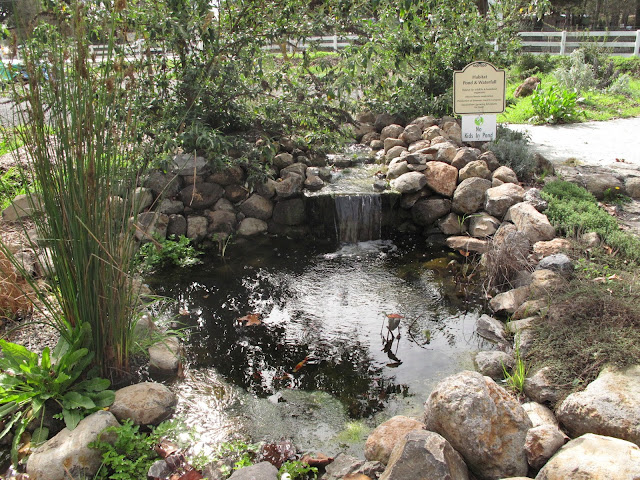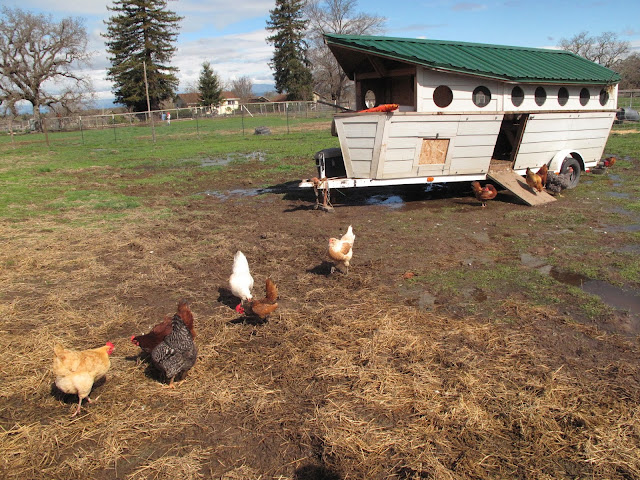Permaculture Skills Center
A few weeks ago, I toured the Permaculture Skills Center in Sebastopol, CA.
But that is what permaculture is all about--coming up with design solutions that work with nature instead of against it.
Other highlights of the tour included a chicken coop that was re-purposed as a greenhouse...
A peek at the composting system, complete with red-worms (vermiculture) and compost tea brewer...
The reason for this was twofold: to see what these folks were up to, and because I was interested in the new Eco-Landscaper Immersion (ELI) program they are starting up in June. In an earlier post, I mentioned that I was planning to complete Merritt College's Permaculture Design Certificate program, but a lot has changed over the past year, and now that I'm a mom, I have to come up with a permaculture plan that meets a few more people's needs than just mine.
It turns out the ELI isn't an exact fit either, but hopefully I'll be able to take some workshops and volunteer with one of the PSC's many developing projects in the future. The center started up just two years ago, in 2012, which is a relatively short amount of time to establish a full-blown CSA program (Taproot Farm) and a functioning permaculture site, so I was impressed with how much they've established so quickly.
The tour started with a topic on everyone in California's mind: water. One of the 12 principles of permaculture is to "catch and store energy," (I've been reading Christopher Shein's great book, The Vegetable Gardener's Guide to Pemaculture to learn more about this), so our tour guides, Sean and Anson, had a lot of great tips on how to do this. The site has a demonstration pond (fueled by a pump) that shows how you can create water-friendly habitats.
They also showed us how swales (ditches) and berms (mounds) can be used to move water from areas where it is least desired to most.
According to Shien, the objective of these is, "to channel water along the longest path possible so you slow, spread and sink the runoff around the property. The soil acts like a sponge and stores water in the ground for plants to use later in the season" (p. 74). Makes a lot of sense. It also makes conventional drainage systems, which "seek to move storm water off the property as quickly as possible" (p. 69) seems crazy in a dry state like ours. Another example of a way to harvest water was seen here,
where the roof of the market used to sell produce and eggs doubled as water catchment.
Since the PSC site is so new, some of the signature permaculture traits, such as a food forest, were still being established.
And the crew was still trying to figure out how to best manage water from the recent rains (some flooding in the row crops).
Other highlights of the tour included a chicken coop that was re-purposed as a greenhouse...
A peek at the composting system, complete with red-worms (vermiculture) and compost tea brewer...
A visit with the pasture-raised hens and their mobile coop used for rotational grazing...
The llamas, also rotationally grazed and used for fertilizer...
And a (careful) tromp through the row crops of Taproot Farm, which will launch as a CSA this spring.
There were other little gems along the way, too, like these solar panels used to power the site,
and this lemon tree that was planted alongside a south-facing wall for additional heat. We were told that citrus doesn't usually grow in Sebastopol, but this one seemed to be benefiting from the permaculture approach.
One chicken certainly liked it and decided to lay few eggs right alongside. If you look closely, you can see a few golf balls in the nest. Apparently these make the chickens think the nest is full, which encourages them to keep laying.
I'm excited to see this place continue to grow and develop. They are offering some important programs, and they've already transformed a neglected site into a thriving demonstration of permaculture practices and principles. It is a beautiful place to pass the day!



















Comments
Post a Comment